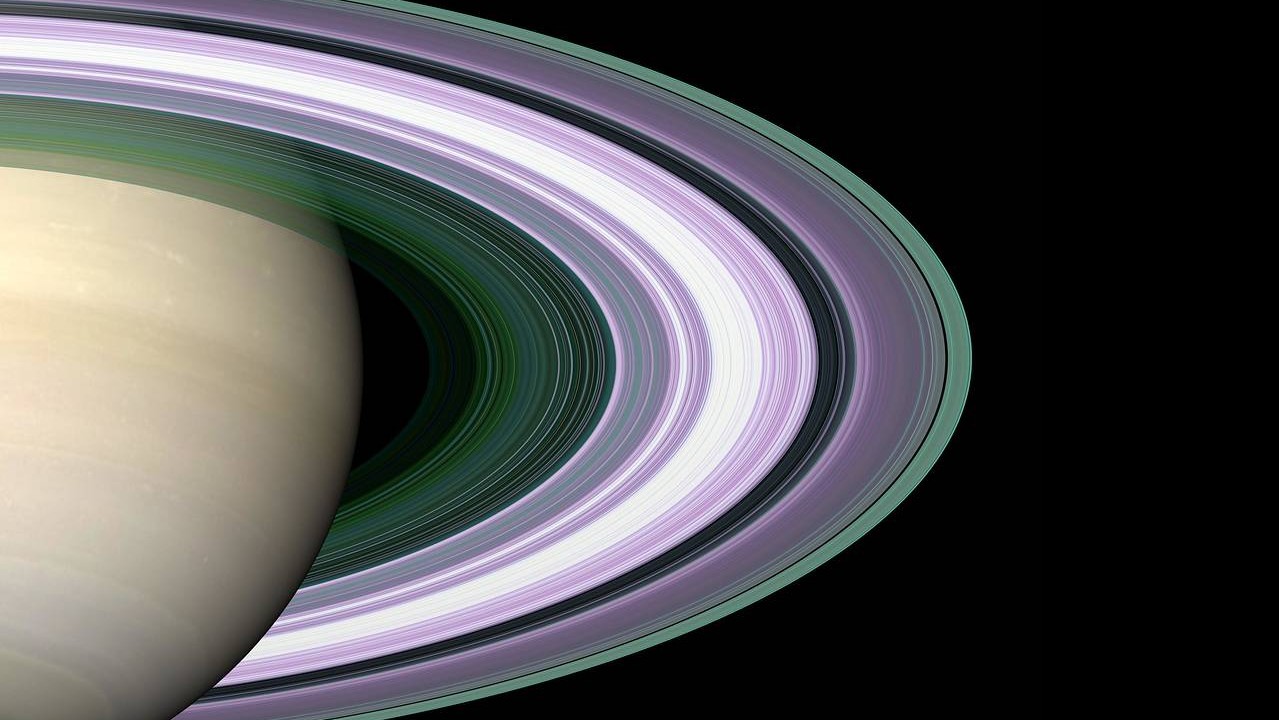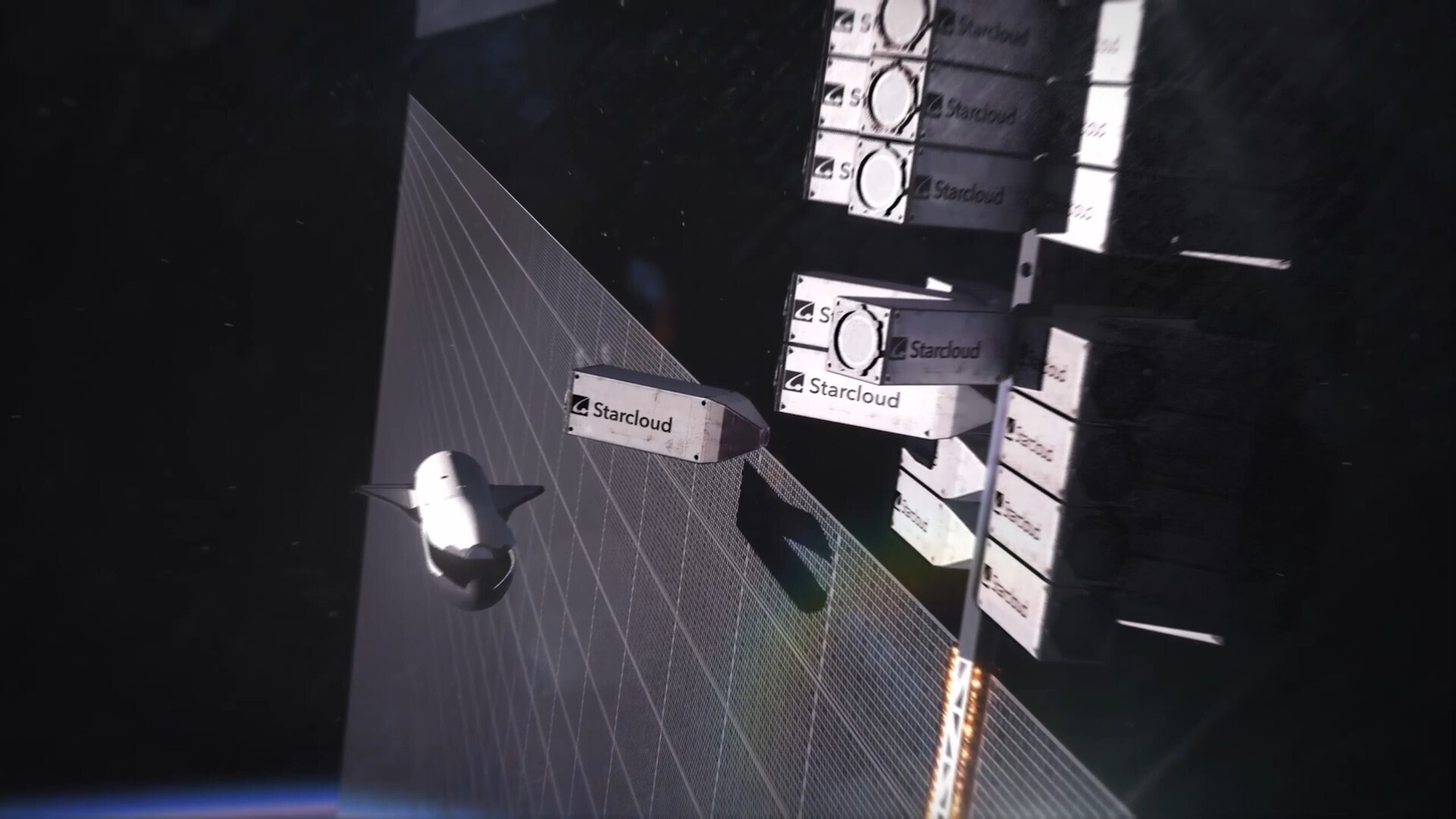See the crescent moon visit Saturn in the night sky Monday (Nov. 28)
Catch the conjunction between Saturn and the moon while you can, as it will disappear before the night sets in on Monday (Nov. 28).

On the evening of Monday, Nov. 28, the moon will share the same right ascension with Saturn, the solar system's second-largest planet, in an arrangement called a conjunction. The arrangement will only be visible for a few hours, disappearing below the horizon as the night sets in.
At the same time as the conjunction between the moon and Saturn, the two astronomical bodies will also make a close approach in the night sky known as an appulse.
During the conjunction, the six-day-old waxing crescent moon will pass four degrees to the south of Saturn, according to In the Sky, with both having a right ascension of 21h29m00s.
Related: Night sky, November 2022: What you can see tonight [maps]
From New York City the conjunction will become visible at around 4:48 p.m. EST (2148 GMT). The moon and Saturn be positioned at 33 degrees above the horizon to the south at the time. The conjunction will reach its highest point in the sky, still 33 degrees above the southern horizon, shortly after this at 4:53 p.m. EST (2153 GMT). (Your fist at arm's length corresponds to roughly ten degrees in the sky.)
This arrangement between Saturn and the moon will remain visible until around 9:09 p.m. EST (0209 GMT) when it will drop below seven degrees over the horizon to the southwest.
During the conjunction, the moon will be at magnitude -11.6, with the minus prefix indicating a particularly bright astronomical object, while Saturn will not be particularly bright to the naked eye with a magnitude of 0.5. Both objects will appear in the constellation of Capricornus the goat during the conjunction.
Breaking space news, the latest updates on rocket launches, skywatching events and more!
Despite making a close approach in the sky, at the time of the conjunction the moon and Saturn will still be too widely separated to be seen with a telescope, meaning the best way to view this astronomical event is with binoculars or simply with the naked eye.
The sixth planet from the sun and the second largest behind Jupiter, Saturn is one of the five brightest solar system planets visible over Earth. The others are Mercury, Venus, Mars, and Jupiter, which like Saturn can all be seen with the naked eye.

Looking for a telescope to see the rings of Saturn? We recommend the Celestron Astro Fi 102as the top pick in our best beginner's telescope guide.
Viewed without the aid of a telescope, Saturn appears as little more than a twinkling dot. It takes just a small telescope however to reveal the gas giant planet and its rings.
First discovered in 1610 by Galileo, Saturn's rings are composed mostly of ice and rock fragments of varying sizes, some as small as a grain of sand, others much larger at around the size of an Earth.
While the formation of Saturn's rings remains something of a mystery many scientists theorize that it has something to do with Saturn's 60 or so moons. As asteroids and other space debris impacted these moons, they broke them into pieces. The rings of Saturn could be composed of the shattered pieces of the moons created by these impacts.
Alternatively, the rings of Saturn may have formed from material that was left over from the formation of the gas giant itself.
The rings of Saturn, which are thousands of miles across but are still quite thin in terms of depth, are not equally spaced with some close together and others separated by large gaps. These rings don't sit still, instead orbiting the gas giant rapidly.
From here on Earth, it appears as if Saturn has seven rings, but a closer inspection reveals each large ring is comprised of several smaller rings , or ringlets.
Saturn is by no means the only solar system planet with rings; the giant planets Jupiter, Uranus and Neptune all have their own ring systems. Saturn's rings are by far the biggest and brightest in the solar system, however, making them a tantalizing target for professional and amateur astronomers alike.
Editor's Note: If you snap the conjunction between the moon and Saturn and would like to share it with Space.com's readers, send your photo(s), comments, and your name and location to spacephotos@space.com.
Follow us on Twitter @Spacedotcom or on Facebook.

Robert Lea is a science journalist in the U.K. whose articles have been published in Physics World, New Scientist, Astronomy Magazine, All About Space, Newsweek and ZME Science. He also writes about science communication for Elsevier and the European Journal of Physics. Rob holds a bachelor of science degree in physics and astronomy from the U.K.’s Open University. Follow him on Twitter @sciencef1rst.

